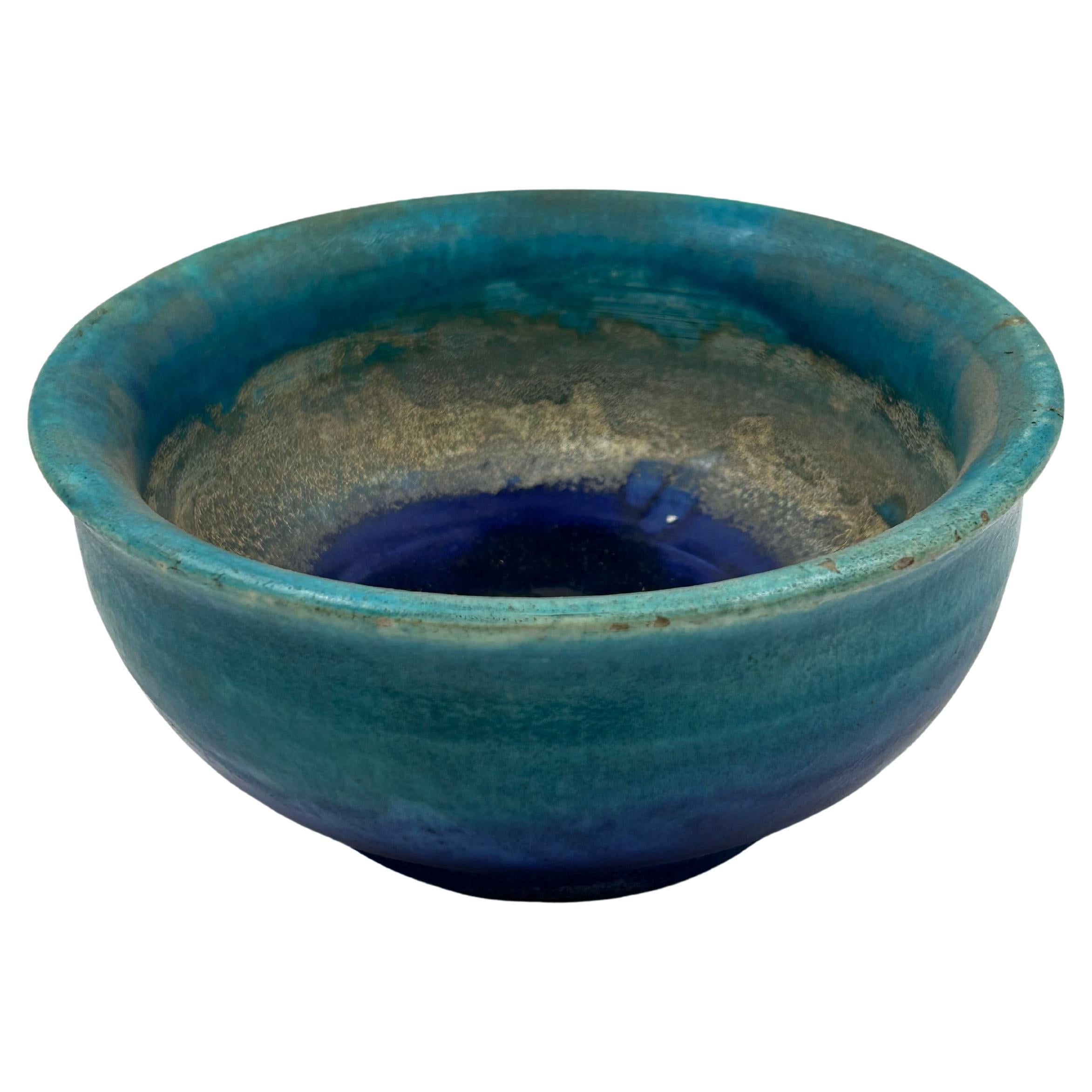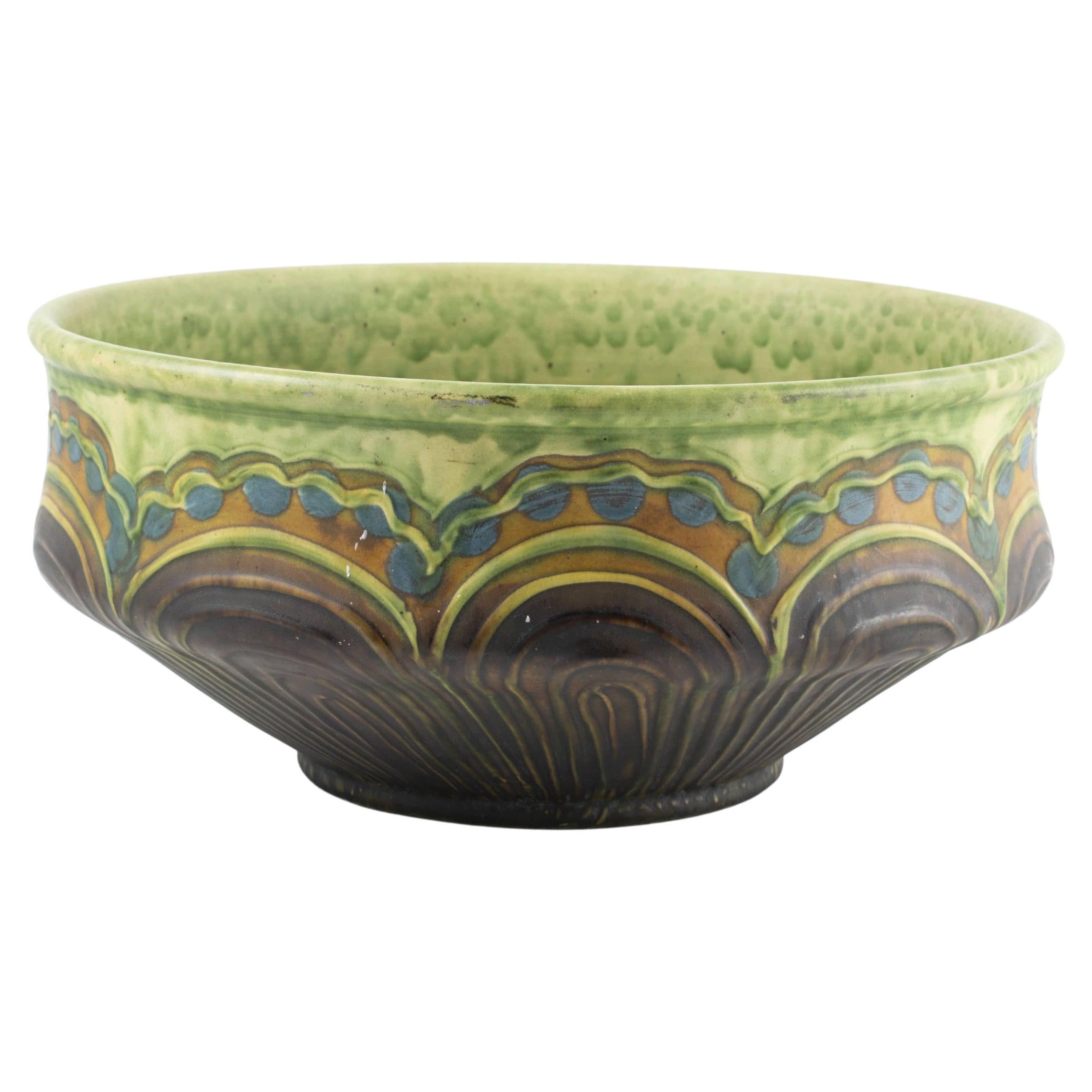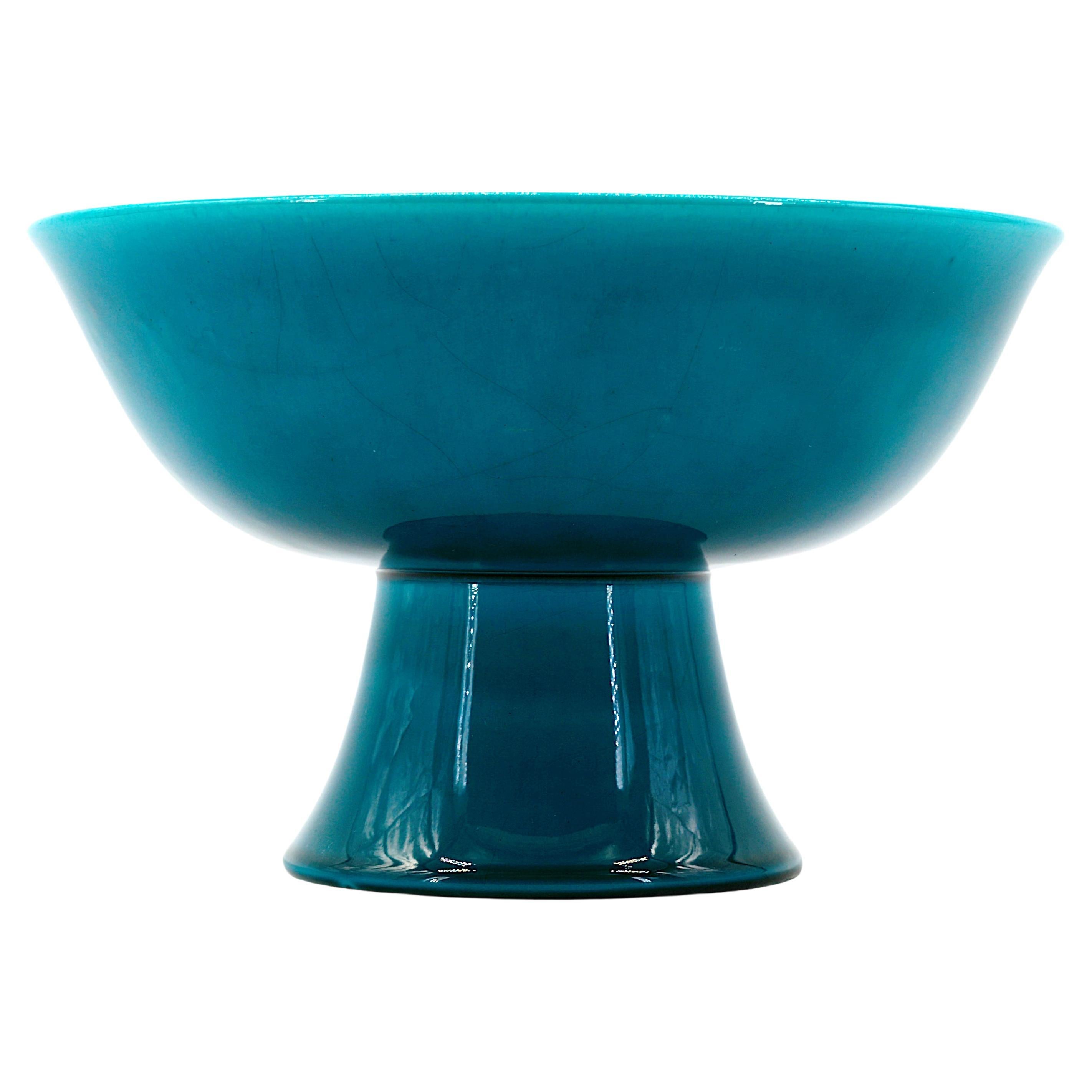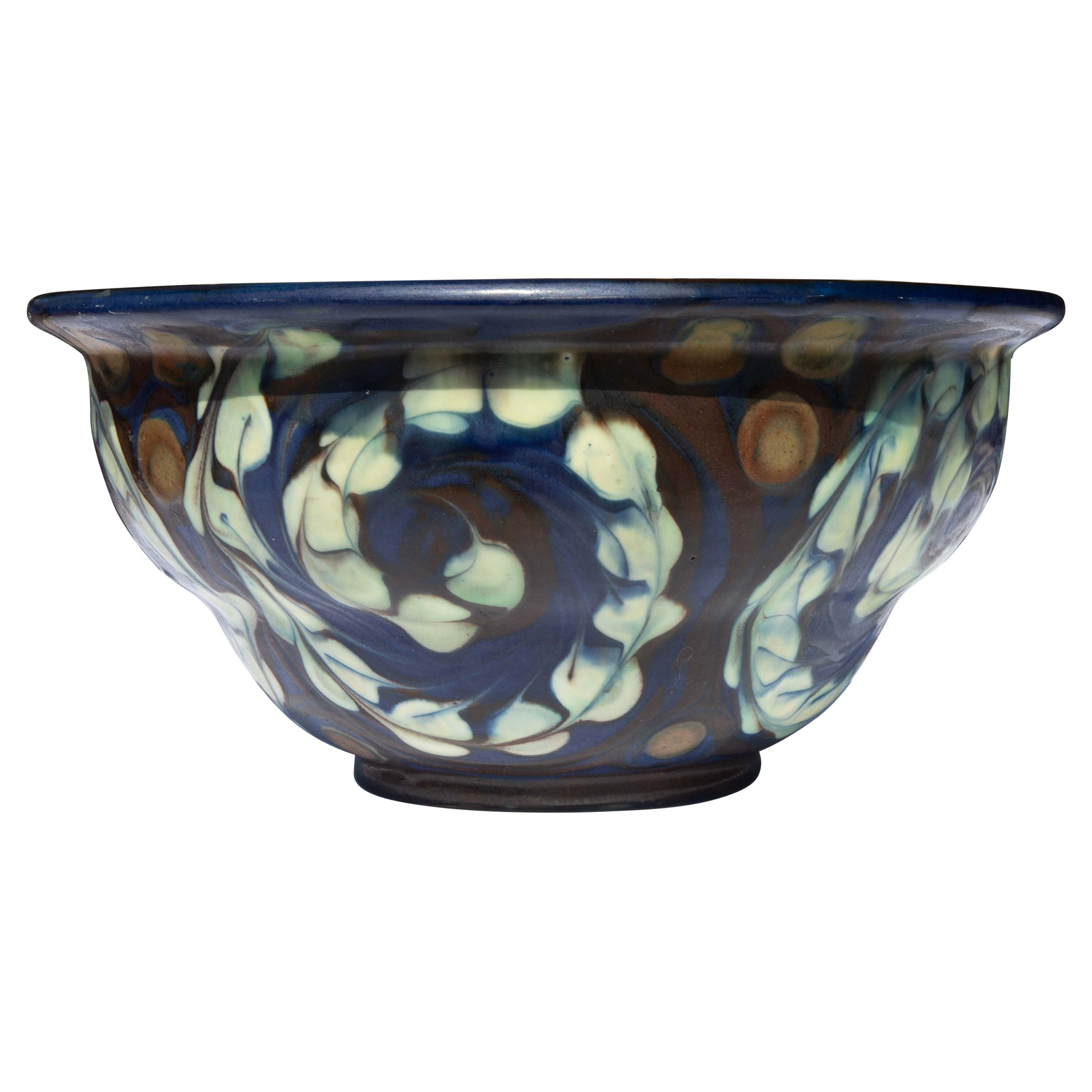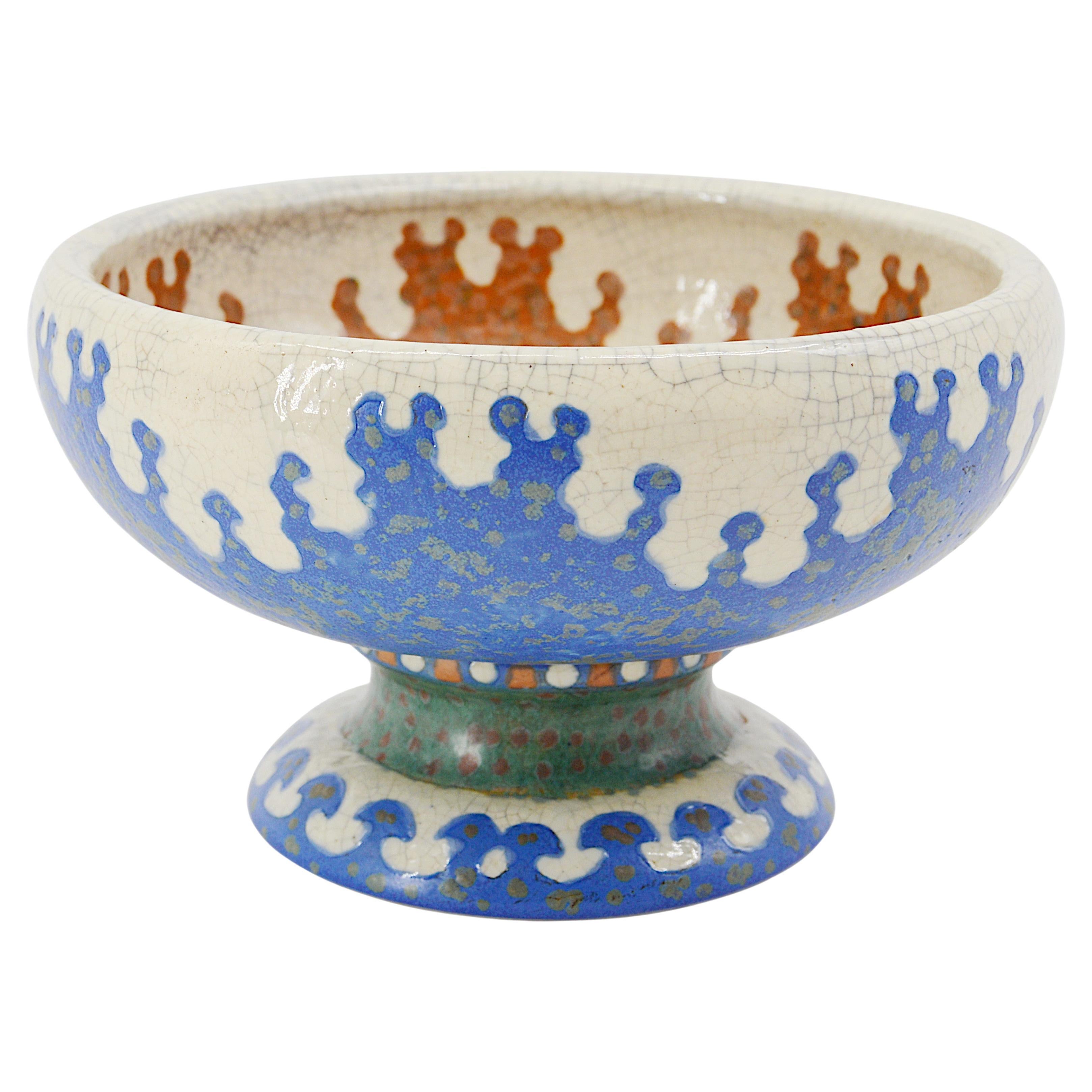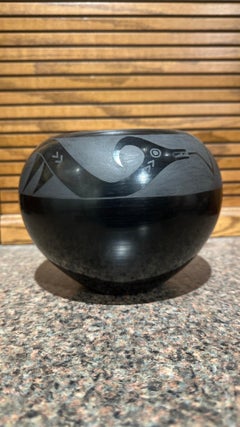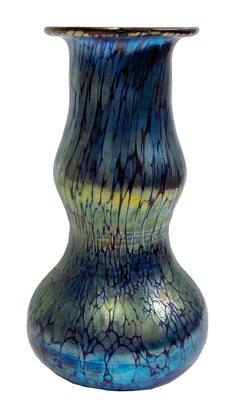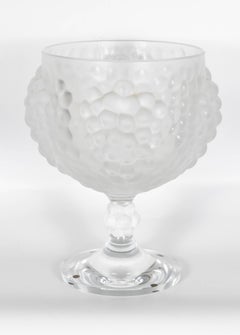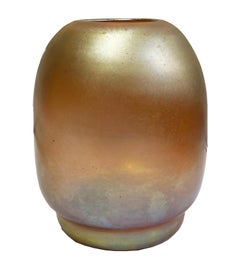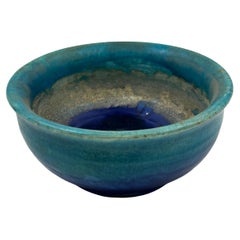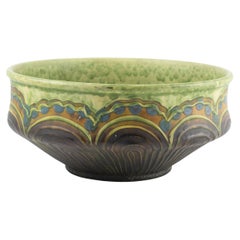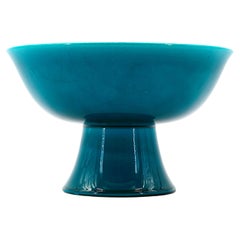Want more images or videos?
Request additional images or videos from the seller
1 of 6
Gabriel Argy-RousseauCourde (Gourd) Bowl1922
1922
$6,500
£5,036.92
€5,715.88
CA$9,316.18
A$10,231
CHF 5,266.53
MX$122,416.89
NOK 67,054.49
SEK 62,840.05
DKK 42,688.48
About the Item
Gabriel Argy-Rousseau (1885-1953)
Gourds Bowl c. 1922
Glass
Signed
3.75 x 4.5 inches
This G. Argy-Rousseau bowl has a very distinct arts and crafts feel to it. The level collar of design shows a yellow squash with purple leaves set against a green background. The overall vase color has a hint of purple, which is very typical of many G. Argy-Rousseau pieces. This bowl was first designed and sold in 1922.
"The name Gabriel Argy-Rousseau (1885-1953) appeared for the first time in 1914 at the Exposition des Artistes Française in Paris. Critics and the public alike responded enthusiastically to his debut and recognized the artist’s originality, the idiosyncrasies of his work, and his extraordinary talent at working the little known and little practiced material of pâte de verre (glass paste). Argy-Rousseau himself recognized that "the process of creating ‘pâte de verre’ is certainly the most artistic and the most personal of all the methods of working in glass and crystal because it allows the artist to easily convey all his thoughts.”
But exactly who was this unknown artist who suddenly stepped forward 10 years after the death of Emile Gallé and during a period in which modern art had not yet made its mark on the applied arts, which were still dominated by the Art Nouveau style? Gabriel Argy-Rousseau, whose real name is Joseph Gabriel Rousseau, was born in 1885 under very modest circumstances. He entered the Ecole Nationale de Sèvres in 1902 and it was his training during this formative period that would influence and shape his career as an artist. This included, above all, his introduction to pâte de verre thanks to Jean Cros, his classmate and the son of Henri Cros, the artist who essentially rediscovered pâte de verre at the end of the 19th century.
Argy-Rousseau left the school four years later with a diploma in ceramic engineering. He subsequently set up his own studio and began to show his first works in 1914 under the pseudonym Gabriel Argy-Rousseau, having married the sister of his friend Plato Argyriades. In 1923, he partnered with a major Paris gallery to found the company 'Les Pâte de Verre d’Argy-Rousseau’. Within fifteen years, he created some 300 models that included vases, lamps, lanterns, and bowls, a number of which can be considered masterpieces. The 1929 economic crisis, however, significantly slowed his production and the company was ultimately dissolved in 1931.
Argy-Rousseau derived much of his inspiration from nature’s more humble specimen, especially from flowers and insects, for example for the 'Violette de Parme’ or the 'Fleurs de Chardons’ as well as the 'Roses’, the 'Chrysanthèmes’ and the 'Papyrus’ pieces. The progression of his style presents itself in these designs: while flexible at first and still under the influence of Art Nouveau, his designs quickly became more rigid as flowers or insects are shown pressed against glass or pinned in a box.
Having already studied Greek art at Sèvres, and always having been exposed to it in his family, Argy-Rousseau considered the Greek style his true passion and a permanent influence in his work throughout his career. The well-known vase 'Le Jardin des Hespèrides’ is the best example as it resembles the Attic vases of the VI. century BC with the hieratic pose of the dancing figures. It is as if their movements are suspended in midair with nature itself suggested by branches and the bucolic landscape. In the same spirit, the vases 'La Danse’ and 'Libations', although dated around the same time, offer a different interpretation of the same subject, as does 'Tragi-Comique’ with its grimacing masks of tragedy. One of the most remarkable works of Greek inspiration, however, is the vase 'A la Chevelure’, so moving in the figure’s contemplative attitude and intensity of expression.
Despite the economic crisis of 1929, Argy-Rousseau continued to produce beautiful works including 'Jeunesse’ and 'Farniente’, two works that exemplify the characteristics of the Art Deco style. But how far would Argy-Rousseau’s creative inspiration have gone without the technical resources at his disposal? Argy-Rousseau was not only a designer of models but he was also an inventor of a technique that was personal to him starting from piecework molds, the coloration achieved in the mass and on the surface after firing. In fact, Argy-Rousseau designed everything himself down to the colorful mixtures of oxides. These choices not only reflect his extraordinary sense of color and in their respective harmonies and densities were very personal to him. He had a particular fondness for fiery reds, and yet, depending on his moods, he often incorporated softer pastel shades. His talent as a colorist makes it possible to recognize his work at first glance.
Light is also essential in enhancing Argy-Rousseau’s work and in bringing it to life. Through the subtle play of light, he was able to create a sort of magical and luminescent quality in his work whereby nothing is left to chance. The vase 'Feuillage Moderne’ is a fine examples of this. The collection reflects the ability of an artist to express his emotions and poetical intentions while sharing these sentiments with the viewer. It also allows us to track the progression of the artist’s style, which lies in harmony with his time. But perhaps above all, this collection shows us the sensitivity of a man and his creative inventiveness that spans from naturalism to abstraction, reflecting its modernity.
Argy-Rousseau stands as the great master of pâte de verre who brought together the expertise of the hand and the creative vision of the mind."
Janine Bloch-Dermant Author of Argy-Rousseau: Glassware as Art, London, 1991.
Gabriel Argy-Rousseau is produced wonderful works of pate de verre art glass from about 1914 until 1937. Somewhere between 200 and 300 different designs have been recorded by researchers. Scholars believe that between 15,000 and 20,000 total pieces of art glass were produced by G. Argy-Rousseau. That is a relatively small production and it has made some pieces of his work very rare today. Please do not make the assumption that Argy-Rousseau was just a studio glass maker. He was the main creative force behind the glass, but it was in fact a large production. There were at times as many as 20 employees. G. Argy-Rousseau glass was sold all over Europe, in The United States, Latin America, and even in North Africa. It is partly because of this extensive original sales network that his glass can be found all over the world today.
The importance of Argy-Rousseau was two-fold. First, it was completely unlike anything glass makers were producing at the time. And secondly, while others started trying the same styles, no one else was ever really able to make anything consistently more appealing or better. So not only was Argy-Rousseau the first, he was also the best. That is a feat that is rarely accomplished in the arts.
- Creator:Gabriel Argy-Rousseau (1885 - 1953, French)
- Creation Year:1922
- Dimensions:Height: 3.75 in (9.53 cm)Diameter: 4.5 in (11.43 cm)
- Medium:
- Movement & Style:
- Period:
- Condition:
- Gallery Location:Missouri, MO
- Reference Number:1stDibs: LU747314527582
Joseph Gabriel Rousseau called Gabriel Argy-Rousseau (1885-1953) was a French sculptor, ceramist and glassmaker who contributed to the rediscovery of cameo glass as a major glass art of the early twentieth century. If the technique of cameo glass dates back to ancient times, it fell into oblivion for a long time. In the last quarter of the nineteenth century, Henri Cros and a handful of artists, often ceramists of the Art Nouveau movement, such as François Décorchemont or Georges Despret, put it in the spotlight. The last of these precursors was Gabriel Argy-Rousseau. He was considered as the only glassmaker to have developed and used the complex process of cameo glass, the other glassmakers working with crystal paste. Entering the Ceramics School of Sèvres, he discovered the cameo glass in the workshop of Henri Cros. Gabriel Argy-Rousseau began to produce between 1910 and 1920. His early works were influenced by Art Nouveau style plant motifs and animal themes. He began at the 1914 Salon of the French Artists in Paris. Between 1921 and 1931, established rue Simplon in Paris, he was a shareholder in the Argy-Rousseau cameo Glass Society. With many collaborators, he produced small very colorful Art Nouveau and Art Deco subjects, distributed in small series: pendants, vases, lamps and night lights and, from 1928, sculptures (statuettes or bas-reliefs) in collaboration with Marcel Bouraine. Unlike his fellow ceramicists, he remained belatedly faithful to the polychrome effects and floral motifs of Art Nouveau style. He developed shimmering colors (ruby red, amethyst, gray, deep blue ...) and textures with marbled effects. He invented new processes for the superficial coloring of the paste, by painting oxide powder before second firing at a low temperature. His works were in glass paste, the statuettes usually in crystal paste. The glass creations of Gabriel Argy-Rousseau remain among the most typical and representative examples of Art Deco production. The production of the workshop ceased in 1931, but Argy-Rousseau continued to create pieces of crystal paste, because of the economic crisis, the opportunity to work the expensive process of the glass paste was no longer possible. He exhibited punctually, especially in 1934, glassware adorned with precious metals. His last exhibition took place a year before his death in 1952. He died forgotten, but left many works in the glass branch, now rediscovered.
About the Seller
5.0
Vetted Professional Seller
Every seller passes strict standards for authenticity and reliability
Established in 1970
1stDibs seller since 2017
156 sales on 1stDibs
Typical response time: Several days
- ShippingRetrieving quote...Shipping from: Missouri, MO
- Return Policy
More From This Seller
View AllJuan Tafoya San Ildefonso Native American Pottery
By Juan Tafoya
Located in Missouri, MO
Impeccable Provenance! See attached pictures of Juan Tafoya holding this particular piece, as well as his business card and his original letter all include...
Category
1980s American Modern More Art
Materials
Clay
Price Upon Request
Diaspora Vase
By Loetz Glass
Located in Missouri, MO
Loetz
Diaspora Vase, c. 1900
Glass
Stamped on bottom
6 inches tall
3 inches diameter
This Loetz vase in the Papillon pattern has blue iridescent Papillon design covering the exterio...
Category
Early 20th Century Art Nouveau More Art
Materials
Glass
Antilles Frosted Grape Cluster Bowl
By René Lalique
Located in Missouri, MO
Antilles Frosted Grape Cluster Bowl
Lalique
Art Glass
Inscribed on Base
12 x 8 inches
Rene Lalique's life and artistic career bestrode arguably the three most important movements in...
Category
20th Century Art Deco More Art
Materials
Glass
Gold Iridescence Vase
By Durand
Located in Missouri, MO
Durand
Gold Iridescence Vase
Glass
Signed on bottom (enameled with numbering)
5 x 3.5 inches
Victor Durand, Jr. was born in Baccarat, France. As several generations before him, Victor, at the age of 12, went to work in a local glassworks. Victor's grandfather and father worked for Cristalleries de Baccarat, a famous glassworks that was established in 1764. In 1882, Victor Durand, Sr. immigrated to the U.S. Victor, Sr. worked for Wheaton Glass...
Category
Early 20th Century Art Nouveau More Art
Materials
Glass
Basket
By Ken Ferguson
Located in Missouri, MO
Basket By Ken Ferguson (1928-2004)
21" x 13"
Ken Ferguson received an M.F.A. in 1954 from Alfred University, and went on to become an influential teacher and artist in his field of pottery. From 1964 until 1996, when he was named Professor Emeritus, Ferguson was Head of the Ceramics Department at the Kansas City Art Institute.
His students included Kurt Weiser...
Category
20th Century Abstract More Art
Materials
Earthenware, Glaze
Price Upon Request
Mata Ortiz Black Pottery
By Griselda Camacho de Silveria
Located in Missouri, MO
Signed "Gris Camacho" on Bottom
This Mata Ortiz Black Pottery is a beautiful handmade jar created by Griselda & Juan Camacho. They are members of the Ca...
Category
Late 20th Century More Art
Materials
Clay
Price Upon Request
You May Also Like
urquoise ceramic bowl by Jean Besnard
By Jean Besnard
Located in Autonomous City Buenos Aires, CABA
Turquoise Ceramic Bowl by Jean Besnard
This ceramic bowl features a wide, open shape with a gently rolled rim. The exterior is a striking deep t...
Category
20th Century French Art Deco Decorative Bowls
Materials
Ceramic
Kähler, Danish Art Nouveau Ceramic Bowl
By Herman A. Kähler 1
Located in Kastrup, DK
Kähler Art Nouveau ceramic bowl.
Decorated with polychrome glaze in a typical art nouveau pattern.
Signed HAK for Herman A. Kähler. Approx. 1900-1910.
Category
Early 20th Century Danish Art Nouveau Ceramics
Materials
Ceramic
Paul Milet French Art Deco Ceramic Bowl, 1920
Located in Saint-Amans-des-Cots, FR
French Art Deco Ceramic Bowl by Paul Milet, Sèvres, France, 1920s. This elegant French Art Deco ceramic bowl, created by Paul Milet in the 1930s, is a beautiful example of the refined craftsmanship for which the porcelain at Sèvres is renowned. The bowl features Milet's signature style, with sleek, modern lines and a timeless design that exemplifies the sophistication of the Art Deco era.
Dimensions: Height: 17 cm (6.7 in), Diameter: 27 cm (10.7 in). The bowl is stamped under the base "PM Sèvres Made in France" (see photo), along with a retailer label (see photo).
This piece is a perfect addition to any collection of French Art Deco ceramics...
Category
Vintage 1920s French Art Deco Decorative Bowls
Materials
Ceramic
Bowl "Nature"
By Émile Gallé
Located in PARIS, FR
Bowl "Nature"
by Emile GALLE (1846-1904)
Exceptional bowl in multi-layered blown-molded glass,
decorated in interlayer with metal oxydes and powders.
Ornated with a glass marquetry,...
Category
Early 1900s Art Nouveau More Art
Materials
Blown Glass
Art Pottery Bowl by Herman Kähler, Denmark, Circa 1930's
Located in Rochester, NY
Hand-painted art pottery bowl by Herman Kähler, Denmark. HAK. Circa 1930's.
Category
Mid-20th Century Danish Pottery
Materials
Ceramic, Pottery
Revernay French Art Deco Stoneware Bowl, 1920
By Revernay Sarreguemines Digoin
Located in Saint-Amans-des-Cots, FR
French Art Deco stoneware bowl on pedestal by REVERNAY (Digoin), France, 1920s. Height : 12.5cm - 5 inches, Diameter : 21.2cm - 8.3 inches. Marked "Revernay 160 3" under the base (se...
Category
Vintage 1920s French Art Deco Decorative Baskets
Materials
Stoneware
More Ways To Browse
Antique Sorter
Large Art Deco Glass Bowl
Art Deco Pate De Verre
Antique Work Light
19th Century Pastel Still Lifes
Antique Weller Vases
Gourd Art
Argy Rousseau Pate De Verre
Latin America Antique
Antique Pin Box
Glass Gourd
Bruce Lenore
David Choe
Dennis Mclaughlin
Ed Ruscha Towel
Edols Elliott Glass
Elizabeth Allen
Endre Rozsda
